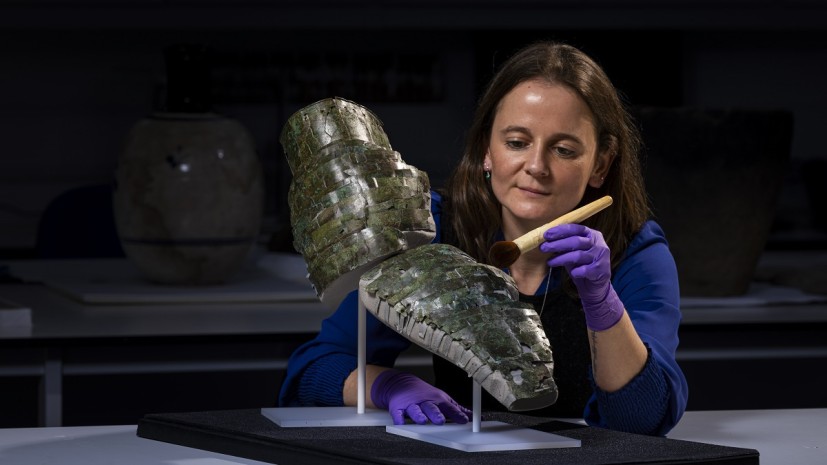A new exhibition will open in the British Museum called "Legion: Life in the Roman Army," featuring a 2,000-year-old Roman armguard centerpiece that was painstakingly restored using over 100 fragmented pieces of the armor.

How the 2,000-Year-Old Fragments Were First Found
According to a public release by the museum, the brass armguard was first unearthed back in 1906 by an antiquarian named James Curle. At the time he was part of an excavation mission at the ancient Roman fort of Trimontium, located near the town of Melrose.
Initially, the artifact was heavily fragmented as it was split into over 100 pieces, however, it was still in remarkable condition with some of its leather straps remaining intact. Since the discovery, the pieces have been stored in the National Museum Scotland's collection.
After more than a century, the fragments were brought together and handed over to a team of conservators in Edinburgh, which spent consecutive weeks in efforts to restore the armguard using the surviving pieces.
According to Fraser Hunter, Principal Curator of Prehistoric and Roman Archaeology at NMS, the resulting restored artifact was by far the most complete example of an ancient Roman brass arm guard, which provides a rare and important glimpse into the era's military life.
"The transformation is striking. Now that it's been reconstructed, you can picture the legionary who once wore it," he said. "It was both protection and status symbol - brass was expensive and would have gleamed like gold on his sword arm."
Read also: From the Qin Dynasty to Arsenic: the Expansive and Surprisingly Lethal History of Wallpaper
Piecing Together National Museums Scotland's Fragmented Artifact
At first, the fragments were thought to have been body armor or a thigh guard, however, in the 1990s, its true function was recognized.
For Roman legionnaires, the armored arm sleeve would have spanned across the person's whole arm starting from the shoulder down to the hand. The endpoint would also be indicated by a metal square intended to shield the wearer's hand.
This particular design was believed to have been inspired by the armor that Roman gladiators wore during their bouts in arenas.
Bethan Bryan, Assistant Artefact Conservator at NMS, said: "Approaching this ancient jigsaw puzzle required careful consideration and it was important to make sure we could display the piece in a manner as near as possible to how it would have looked 2000 years ago."
"I'm thrilled that it can now be seen by audiences in a new light and has been preserved for generations to enjoy," she continued.
The upcoming exhibition at the British Museum in which the newly reconstructed armguard will be showcased, called the "Legion: Life in the Roman Army," will open this upcoming Feb. 1.
The show will be focusing on the exploration of a Roman soldier's life, from enlistment to retirement, using artifacts such as papyri letters written by Roman Egypt troops, imperial armor, and tablets that were discovered near Hadrian's wall in Brampton, UK.